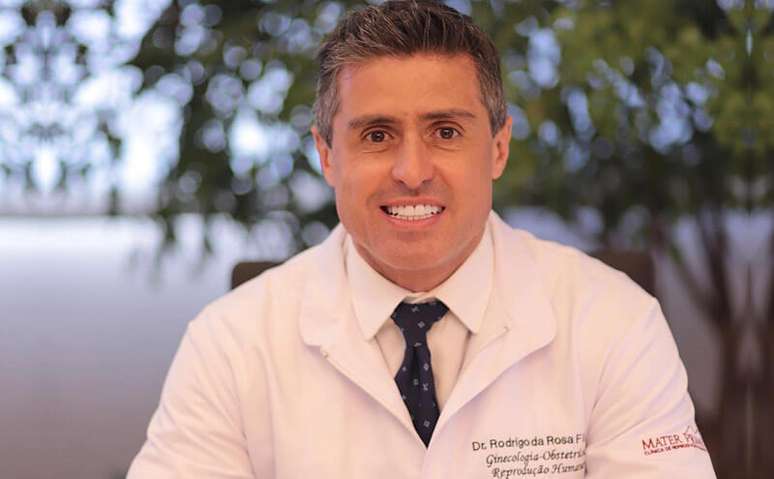Biotech startups invest in the development of the technique, but ethical conflicts can limit the issue
html[data-range=”xlarge”] figure image img.img-047250ef03f8112db1e6a7f36f06e34a4e84utyc { width: 774px; height: 479px; }HTML[data-range=”large”] figure image img.img-047250ef03f8112db1e6a7f36f06e34a4e84utyc { width: 548px; height: 339px; }HTML[data-range=”small”] image figure img.img-047250ef03f8112db1e6a7f36f06e34a4e84utyc, html[data-range=”medium”] figure image img.img-047250ef03f8112db1e6a7f36f06e34a4e84utyc { width: 564px; height: 349px; }
Ever since an article in the journal Nature reported the formation of the world’s first synthetic embryo using non-reproductive cells to create so-called gametogenesis in vitro, many scientists have started to envision the possibility of a revolution in the field of infertility treatments.
“This approach goes far beyond IVF, which combines eggs and sperm in the laboratory, because it does not require natural eggs or sperm. Gamete production occurs outside the body, with non-reproductive cells, such as those in the skin or blood. Called in vitro gametogenesis, or IVG, the technique promises to one day provide a cure for many types of infertility, slow down or even shut down biological clocks, and allow for better selection of embryos,” explains Rodrigo Rosa, human reproduction specialist and partner of Di Material laboratory.
But could the future of human reproduction include this kind of pregnancy with synthetic embryos?
The revolutionary technique is still being tested
In the technique, still in the experimental phase, the researchers who are trying to cultivate these cells through IVG, have the objective of reprogramming the blood cells, donated with the consent for embryonic research, to transform them into stem cells, which can take the role of any cellular type organism.
“The stem cells are then programmed into primordial germ cells, the precursors of eggs. These germ cells are placed in dishes with lab-grown helper cells, which recreate the ovarian environment and are collectively known as ovarian organoids. The hope is that these helper cells will send the signals necessary to persuade the germ cells to develop into mature eggs capable of being fertilized,” says the doctor.
‘Researchers use a variety of techniques, such as RNA sequencing, to ensure that cells made in the lab are expressing the same genes they would express at a similar stage in utero, and that they are forming what we call follicles, the structures in the ovary. in which immature eggs develop,” adds the doctor.
Help in cases of late fertility
If mature human eggs could be derived from a person’s skin cells, she said, it would avoid most of the cost, most of the discomfort and all the risks of IVF. It could also help in cases of late fertility, as age is a time bomb and affects female fertility.
“Time is relentless not only in the quantity of eggs, but also in their quality. This decline in fertility occurs from the age of 30, but from the age of 35 it is a much more pronounced decline, with the incidence of spousal infertility affecting one in seven couples aged around 35. And it becomes one in two couples at the age of 41. So it’s really an incidence that rises exponentially from the age of 35,” says Rodrigo.
But that future may not be too close. “The technology to produce babies from cells other than eggs and sperm is still a decade or more away. While we can obtain human reproductive cells in culture, we need to carefully evaluate the quality of the eggs, because even in mice most eggs aren’t potent enough to develop into a baby. Those that have developed to this point have become healthy mice capable of having their own offspring and grandchildren. But ethical conflicts can limit its application in humans,” Rodrigo argues.
It’s time to discuss the ethical implications of IVG
Before science turns possibility into reality, now is a good time for the public to consider the implications of IVG.
When Japanese researcher Katsuhiko Hayashi demonstrated he could turn the skin cells of adult male mice into healthy eggs, he envisioned using this approach to treat infertility in people who have extra sex chromosomes, such as XXY or XYY, compared to the typical XX. women and XY for men.
It could also allow same-sex couples to have a child biologically related to both parents. The technique isn’t just for humans: In animals, IVG can be used to conserve endangered species.
But there are open questions: can IVG be considered safe for humans? How many embryos should be sacrificed in the process? While science can be driven by curiosity, it can also be used to cash in on people desperate to continue their biological lineage or simply willing to pay for the offspring of their choice.
“Ethical issues also surround the specter of 90-year-olds who have children this way, or children who have children, or use the DNA of people long dead,” the doctor says.
Futurists posit wider possibilities, such as an embryo formed with the DNA of four people instead of two, or even the so-called “unibaby”, the result of a person reproducing with itself. The technique may also encounter regulatory hurdles from countries.
For the moment, the best thing to do is to preserve it through freezing, if you think you are not yet old enough to have a child or if you have a disease that affects the reproductive system, or ask for help from doctors specialized in Human Reproduction.
“Despite its limitations, IVF (in vitro fertilization) is a safe treatment that has allowed millions of couples to have a child,” concludes Rodrigo.
HOMEWORK inspires transformation in the world of work, in business, in society. Created by COMPASSO, a content and connection agency.
Source: Terra
Ben Stock is a lifestyle journalist and author at Gossipify. He writes about topics such as health, wellness, travel, food and home decor. He provides practical advice and inspiration to improve well-being, keeps readers up to date with latest lifestyle news and trends, known for his engaging writing style, in-depth analysis and unique perspectives.








